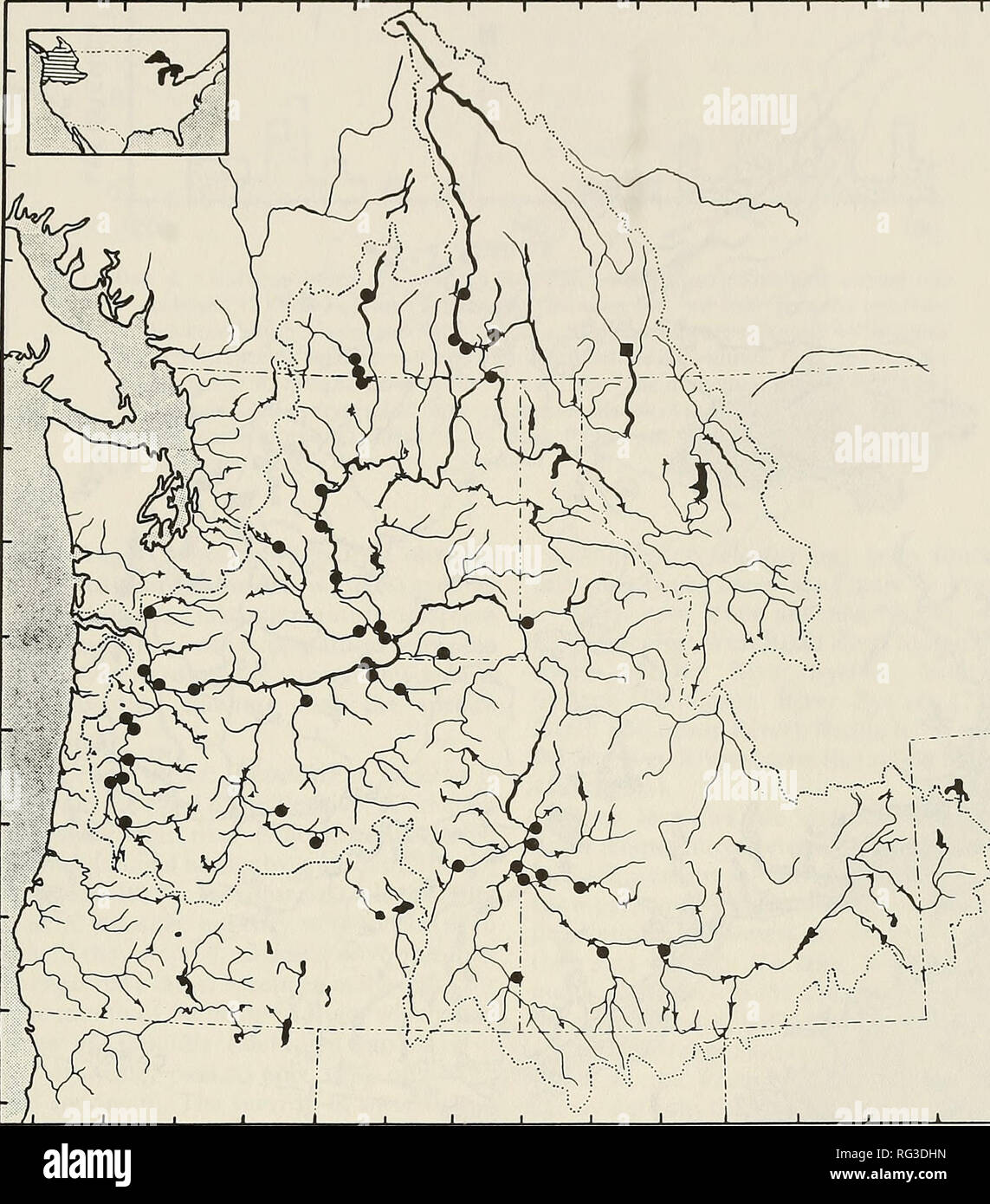. The Canadian field-naturalist. 1991 Peden: Status of the Leopard Dace i 1 r i r. Figure 2. Map showing the distribution of Rhinichthys falcatus in the Columbia River drainage. Note: two records in the Upper Deschutes System of Oregon need verification. The darkened square shown in the upper Kootenay River represents a record shown on a distribution map by Scott and Crossman (1973), but has yet to be confirmed. River. Peden and Clermont (1989) provided evidence that these populations are probably natural ones trapped at the time of impoundment rather than originating from other sources. A few

Image details
Contributor:
Book Worm / Alamy Stock PhotoImage ID:
RG3DHNFile size:
7.1 MB (404.3 KB Compressed download)Releases:
Model - no | Property - noDo I need a release?Dimensions:
1482 x 1685 px | 25.1 x 28.5 cm | 9.9 x 11.2 inches | 150dpiMore information:
This image is a public domain image, which means either that copyright has expired in the image or the copyright holder has waived their copyright. Alamy charges you a fee for access to the high resolution copy of the image.
This image could have imperfections as it’s either historical or reportage.
. The Canadian field-naturalist. 1991 Peden: Status of the Leopard Dace i 1 r i r. Figure 2. Map showing the distribution of Rhinichthys falcatus in the Columbia River drainage. Note: two records in the Upper Deschutes System of Oregon need verification. The darkened square shown in the upper Kootenay River represents a record shown on a distribution map by Scott and Crossman (1973), but has yet to be confirmed. River. Peden and Clermont (1989) provided evidence that these populations are probably natural ones trapped at the time of impoundment rather than originating from other sources. A few individuals with intermediate characters may be hybrids and their existence should be studied (Figure 4). Only 15 specimens of R. falcatus were found after 20 hours of sampling, suggesting that this population is small. Okanagan Lake: There have been persistent reports of R. falcatus from Okanagan Lake (Carl et al. 1959; Scott and Crossman 1973). We sampled both Okanagan Lake and River, but found only a few specimens in the lake, opposite Kelowna. They occurred on stoney beaches having shallow slope with beds of the water reed, Scirpus acutus, occurring offshore. In our judgement the Okanagan River may have been too warm for the species. Arrow Lakes: Rhinichthys falcatus is well known from the Arrow Lakes (Carl et al. 1959; Scott and Crossman 1973). We sampled the same locations recorded for museum collections of the species and found R. falcatus to still be there.. Please note that these images are extracted from scanned page images that may have been digitally enhanced for readability - coloration and appearance of these illustrations may not perfectly resemble the original work.. Ottawa Field-Naturalists' Club. Ottawa, Ottawa Field-Naturalists' Club